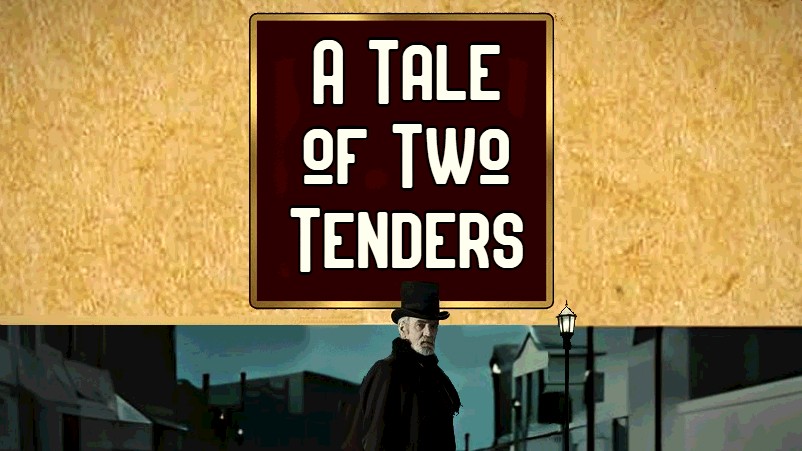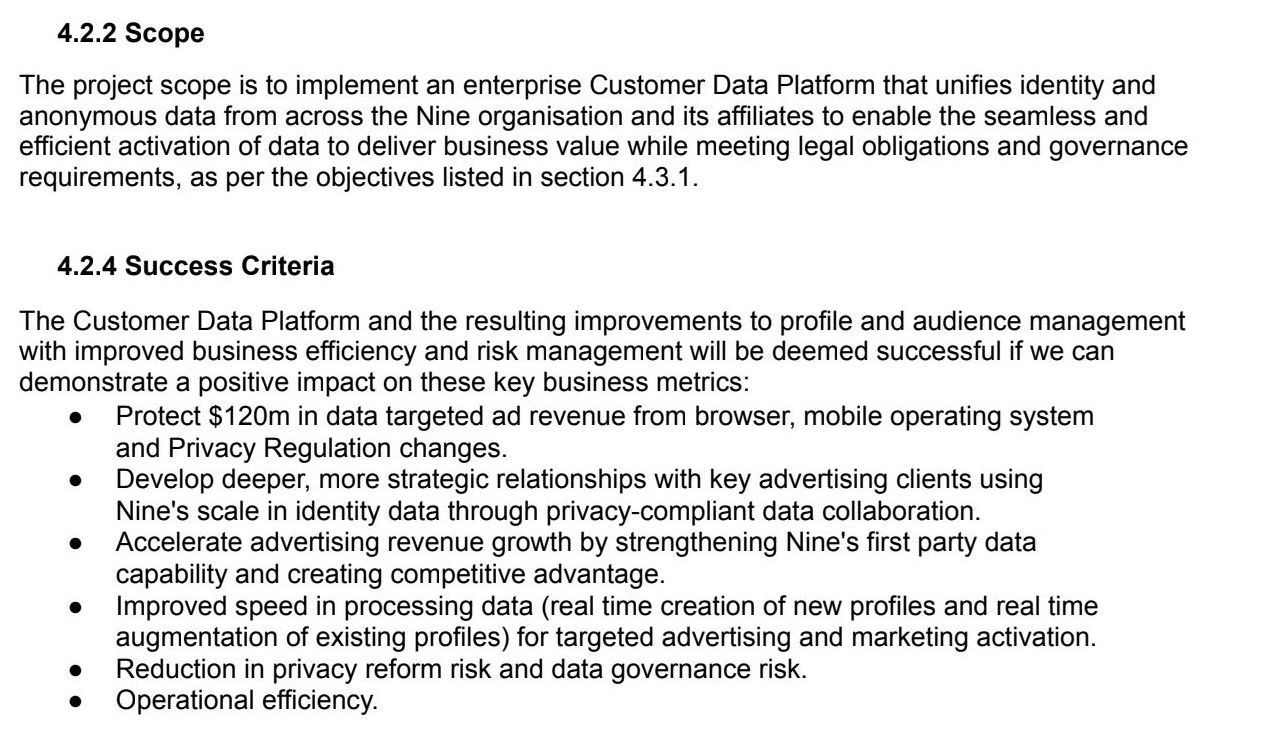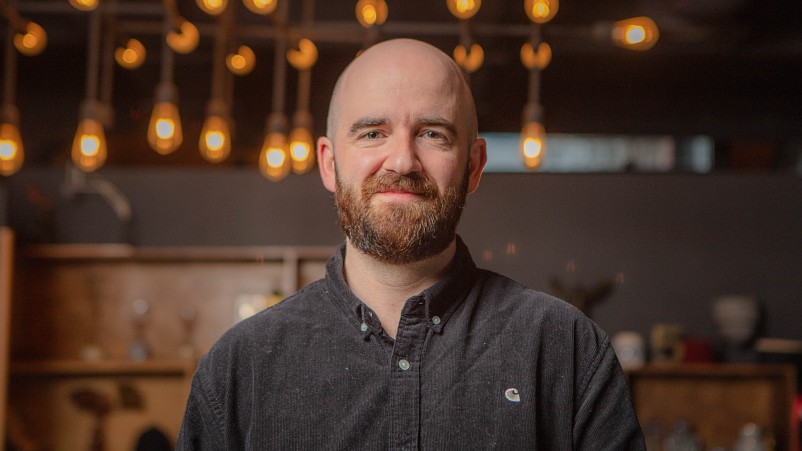A tale of two tenders: Three years after Nine's first attempt to stand up an Adobe CDP failed it's back on track, set to meet data-driven Olympic commitments and defend $120m in digital ad revenues

'Nothing that we do, is done in vain' Nine learned from the missteps of its first CDP tender and is now on a better path Pic: and quote, Charles Dickens, A tale of two cities
It was the worst of times, and now hopefully the best of times as Nine says it is on track to deliver all of its data-driven commitments to its Olympic sponsors - despite having to overcome delays in standing up a CDP it began implementing in 2021. The early problems — including promised functionality that didn't materialise — were so bad and delayed the project to such an extent the media giant went back to market with a new tender in the second half of last year. That did the trick although to the surprise of many in the tech sector, and despite a comprehensive evaluation of alternatives from companies like Tealium and Salesforce, and composable solutions from Hightouch and others, Nine stuck with Adobe. And it's not the only data-driven solution developed by Nine using Adobe’s technology that has initially caused it grief - Audience Match, now regarded as a revenue winner and a strategic asset, likewise ran into early problems when Nine connected into Adobe. But just like the CDP, Nine has pulled that project back on course and is now delivering wins for the company and its clients.
What you need to know
- Nine is finally on track to deliver its long-running Adobe CDP implementation which first started in 2021 under the attention-grabbing launch at its Upfronts of "people-based marketing".
- The first iteration of the project failed and the media giant went back to market with a new tender in the second half of last year.
- The second project has seen much greater success thanks to the evolution of the product, and everything both Nine and Adobe's Professional Services group learned the first time around.
- Despite the delays, Nine says there is no risk around promises it made to its Olympic partners.
- Nine also needs the CDP to work to help buttress $120m in digital ad revenues in an environment where a privacy-centric approach to technology will be critical as regulators rewrite the rules around targeting and identification.
- Nine's Audience Match, now considered a strategic asset and a significant revenue source, had a similarly troubled start and was likewise initially saddled by overpromises from the vendor, but also by the lack of first-party sophistication among some of the clients.
- But like the CDP project, Nine and Adobe worked together to overcome early dramas.
- Nine's experience is not unique. CDP projects are technically and organisationally complex initiatives that throw up many challenges around data integration, governance, and cultural change.
"We will absolutely deliver on all of our campaigns with advertisers and provide the best digitally-led Olympic and Paralympic Games that Australia has ever seen. No commitments have been made to Nine's Olympic partners around the specific data technology infrastructure that will be used to serve audience-targeted campaigns during the Olympics, nonetheless, we are very confident with where the CDP product capability, implementation, and delivery is at."
Nine has dragged its troubled and long-running Adobe CDP project back on schedule, courtesy of a new tender, greater stakeholder involvement, more evolved technology, and superior management and culture change approach according to project insiders.
In March this year, Mi3 reported that Adobe had won Nine’s CDP tender. It did so against traditional competitors like Tealium and Salesforce, and also more contemporary composable approaches from Hightouch and at least one other provider.
But we only reported half the story. What we didn’t catch at the time was that this was a retender because the first project had effectively failed to reach its goals and now Nine wanted to evaluate the alternatives given the market had evolved so much in two years.
What went wrong?
During 2021, some of the functionality Adobe promised in the first tender failed to materialise once Nine started getting into the nuts and bolts of the implementation.
That led to a pause on the project while Nine and Adobe went back to the drawing board on some issues. By the time a solution was found and a proof of concept completed, the contract period had expired. The project was also complex in scope and Nine insiders acknowledge the organisational change aspects could have been better managed (as they say they were the second time around).
The work Adobe did to recover from the initial misstep was enough to secure it a second tender, much to the surprise and chagrin of its industry rivals. The end result of the second tender is that Nine is still using Adobe’s CDP, and the implementation is still being overseen by Adobe’s Professional Services team.
Olympic imperatives
The stakes were much higher for Nine the second time around.
Nine wants its CDP to unify identity and anonymous data across the organisation and its affiliates. The ultimate goal is to “enable the seamless and efficient activation of data to deliver business value while meeting legal obligations and governance requirements.”
It's an ambitious project and as many as 55 use cases were considered.
The TV, radio, and digital publishing giant is counting on a more sophisticated first-party data architecture to improve the speed at which it can process data and help brands better target advertising and market activations on its properties, ultimately accelerating revenue growth. It should also mitigate against governance risks as sensitive customer data become more core to its business.
But there was also a more pressing need that meant failure the second time around was not an option – the Olympics and the need to keep faith with sponsors.
Happily for the media giant any risk on that front is now off the table.
A spokesperson for Nine told Mi3, “We will absolutely deliver on all of our campaigns with advertisers and provide the best digitally-led Olympic and Paralympic Games that Australia has ever seen”.
The spokesperson said none of those promises were based on a “specific data technology infrastructure that will be used to serve audience targeted campaigns during the Olympics, nonetheless, we are very confident with where the CDP product capability, implementation, and delivery is at."
Nonetheless, data technology infrastructure is key to delivering services, even if the specific design of that infrastructure is a matter for Nine rather than its customers.
As the 2023 CDP tender that Nine sent to prospective suppliers – and which Mi3 has cited – makes clear, “The recent partnership with the IOC is an important part of Nine’s strategy, as we continue to redefine Australian broadcast and streaming television. Nine will harness the power of a diverse network of streaming, television, audio, and digital platforms across 9Now, Stan, the 9 Network, and talk radio stations 2GB, 3AW, 4BC, and 6 PR. Full coverage will also be delivered across Nine’s suite of print and online publishing platforms, the Sydney Morning Herald, The Age, Brisbane Times, WA Today, the Australian Financial Review nine.com.au.”
Beyond the Olympics, the tender also makes clear the criticality of the CDP in protecting its digital advertising, listing one of the success criteria as the need to “Protect $120m in data targeted ad revenue from browser, mobile operating system and privacy regulations."

Adobe's Mulligan
As to why the second tender implementation is working better than the first, insiders say Adobe and Nine both understand the product better, and the software has evolved over the two years. Likewise, the internal communication and culture change at Nine is being better managed the second time around, MI3 was told.
The Nine spokesperson addressed the evolution of the tech when discussing why Adobe was successful in the second tender: “They have an inbuilt data cleanroom called 'Segment Match', which will become yet another pathway that advertisers can use to match their customer data to Nine using our Audience Match product.”
Beyond the change in the technology, Mi3 understands there was another fundamental reappraisal of the role of the CDP - Nine came to understand and recognise the benefits beyond just targeted advertising.
Having identified the potential benefits across areas such as marketing and subscriptions, Nine formed a cross-working group that included representatives from TV, streaming, publishing, and commercial ad sales. The group set out very clear success criteria for the use cases. It also meant that the project now had greater input and expertise from across the group and that helped it laser in on what was necessary to deliver a single view of the customer.
Audience Match
Ironically Audience Match likewise got off to a rocky start in 2021, although that was as much about the immaturity of its clients' first-party data strategies at the time, as it was about the technology.
When Nine launched Audience Match, it was described as “a custom destination, [that] enables marketers to access greater customer insights, targeting and effectiveness with features to support privacy-conscious experiences.”
Essentially, Audience Match helps Nine’s clients match their first-party data in a privacy-compliant way with Nine’s audience in support of things like remarketing, look-a-like targeting, or audience suppression of their customers across Nine's digital inventory.
This was before data clean rooms had taken off, and Nine was one of the first publishers globally to be a destination in Adobe’s People-Based Destinations.
At the time, Nine insiders told Mi3 they felt they were oversold on Adobe’s capabilities. Now insiders characterise the issues as teething problems and acknowledge the scale of what they were trying to do.
Nine also wasn’t helped by Google’s repeated delays on Cookie Deprecation.
But once again, Adobe appears to have pulled the fat from the fire, and Nine now feeds Audience Match which has connectors with LiveRamp, Salesforce CDP, Karlsgate, and soon AEP Segment Match, Tealium CDP and Snowflake, in addition to Adobe is delivering well for clients. Indeed it has for some time.
Thanks to that success it is now regarded as a strategically important solution and a strong revenue driver.
When implementing a new martech platform, especially something as intricate as a CDP, there’s often a strong desire to make a significant impact. This is particularly true in environments where proving ROI immediately is crucial to the C-suite.
A familiar story
Nine’s experience is hardly unique in the realm of CDP delivery, even if the time it has taken to reach this point is at the wrong end of the bell curve.
As we reported in the third article of our CDP investigation series last year, “It’s much messier and more complicated than the slick sales pitches let on. Fights over data ownership, significant technical integration problems, and serious limitations with all those out-of-the-box connectors the vendors like to brag about create risks to project deadlines, and in the worst cases, career advancement. Sometimes just identifying who has credentials and getting them to share can take months.”
While not commenting specifically on Nine, Richard Taylor, managing director of Digital Balance, a Melbourne-based digital agency told Mi3 that problems with technology such as data integration, data governance, and cross-departmental collaboration are familiar bugbears in CDP projects.
He broke out five common problems;
- Data Integration: Can the selected CDP access data from the required sources? This can be complex, especially when dealing with legacy systems or data silos.
- Data Privacy and Compliance: Adhering to data protection regulations is crucial. Do you have consent to use existing data in the manner you want with a CDP?
- Data Governance: Who in the organisation owns the existing data you want to connect to, and who will be responsible for new data collected and orchestrated by the CDP? In large organisations, there are often “empire builders” who are protective of the information they control, which can make data sharing and integration challenging.
- Cross-Departmental Collaboration: Successful CDP implementation often requires collaboration between various departments, including IT, marketing, and data analytics teams. Ensuring all stakeholders are aligned and have a clear understanding of the project goals can help mitigate potential roadblocks.
- Ongoing Education and Training: Implementing a CDP is not a one-time task. Continuous education and training for staff are essential to ensure they are up-to-date with the platform’s capabilities and can leverage it to its full potential. This can significantly enhance the effectiveness of the CDP over time.
These are not even necessarily the most important. According to Taylor, “When implementing a new martech platform, especially something as intricate as a CDP, there’s often a strong desire to make a significant impact. This is particularly true in environments where proving ROI immediately is crucial to the C-suite.”
However, aiming to launch with every possible use case covered or focusing on the most challenging ones can lead to the risk of never launching at all.
Per Taylor, “The key is to ensure the chosen platform can deliver on its promises. The best way to confirm this is by consulting other companies already using the platform, seeking unbiased reviews, or running a proof of concept (POC). Launching with a Minimum Viable Product (MVP) and iterating from there is always the best strategy to demonstrate quick, tangible results.”
Nine's experience brings some of these points to life. and is also a reminder that CDPs are not shrink-wrapped, plug-and-play solutions. Particularly in complex enterprise environments, the technical and organisational challenges can overwhelm even well-resourced teams. But the Nine CDP story which tracks an implementation redemption arc, also reminds us, that those problems can be overcome.



